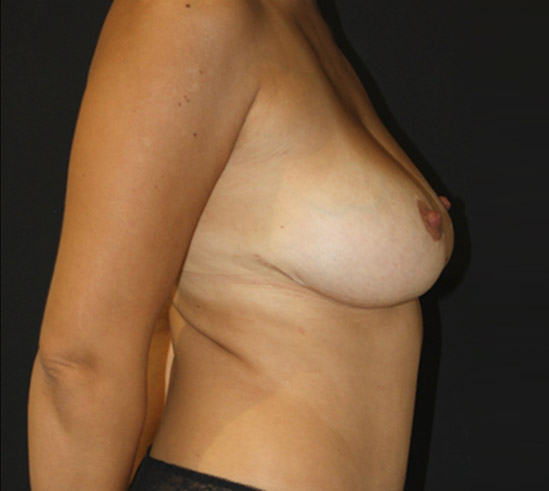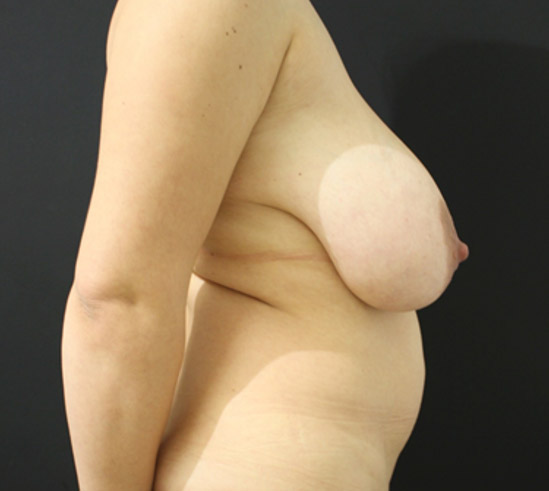Breast reduction
Breast reduction is a surgical procedure that is performed under general anesthesia and aims to reduce the size of the breasts and at the same time, lift them. In all cases, an incision is made around and below the nipple. In large breasts, the surgeon makes an incision parallel to the submammary fold at the same time. That is, at the point where the breast ends and the abdomen begins. In many cases, breast reduction is combined with a mommy makeover with impressive results for the psychology and quality of life of the woman.
Breast reduction – Purpose of the surgery
The goal should be to position the nipple higher and fill the upper pole of the breast while reducing its volume.
Breast reduction – Postoperative instructions
- Pressure bra for 6 weeks around the clock.
- The skin scar is red for the first 3 months and gradually turns white with the final result being visible in 1 to 3 years.
- The incision should not be exposed to the sun for the first 3 months.
- Progressive resumption of exercise is allowed after the 6th week.
- The aesthetic result is visible the first year after surgery.
- For the better course of the scar, massage with a special cream daily and silicone patches locally on the incision are recommended until the desired aesthetic result is achieved.
Small imperfections may appear such as a visible scar. Such imperfections can be corrected with local anesthesia after the first year after surgery.
Breast reduction – Preparation before surgery
- Photographs of the area are taken.
- Classical preoperative check-up includes blood tests, chest X-ray, and cardiac evaluation.
- 12 hours before surgery do not eat anything.
- 6 hours before surgery do not drink anything.
- On the morning of the operation do not take any medication without the anesthesiologist’s approval.
- Alcohol should be stopped 1 week before surgery.
- In the case of general anesthesia, it is necessary to meet with the anesthesiologist before the surgery.
- Report previous anesthetic experiences, either positive or negative and inform him/her of any health problems or medication you are taking
- Do not take aspirin, anti-inflammatory drugs, or herbal supplements 10 days before the surgery, as they increase the possibility of bleeding during and after surgery
- 3 days before the surgery and every day after washing your face or body with medicated soap, depending on the planned surgery.
Preparation before surgery
- Photographs of the area are taken.
- Classical preoperative check-up includes blood tests, chest X-ray, and cardiac evaluation.
- 12 hours before surgery do not eat anything.
- 6 hours before surgery do not drink anything.
- On the morning of the operation do not take any medication without the anesthesiologist's approval.
- Alcohol should be stopped 1 week before surgery.
- In the case of general anesthesia, it is necessary to meet with the anesthesiologist before the surgery.
- Report previous anesthetic experiences, either positive or negative and inform him/her of any health problems or medication you are taking.
- Do not take aspirin, anti-inflammatory drugs, or herbal supplements 10 days before the surgery, as they increase the possibility of bleeding during and after surgery.
- 3 days before the surgery and every day after washing your face or body with medicated soap, depending on the planned surgery.
General Complications after surgery
Complications in plastic surgery operations are not common but it is necessary to be aware of them at the first appointment.
- Hematoma: A hematoma is the accumulation of blood in the wound.
- Inflammation: To prevent inflammation, antibiotics are administered during surgery.
- Poor wound healing: If the incision in the operated site is more prominent than expected, it can be corrected 6 months to a year after surgery with local anesthesia. In some cases, the appearance of keloids is possible where specific treatment is needed.
- Skin necrosis: It is more likely in heavy smokers.
- Pulmonary embolism and thrombosis.
This text may give rise to new questions. We are at your disposal for any other information.





